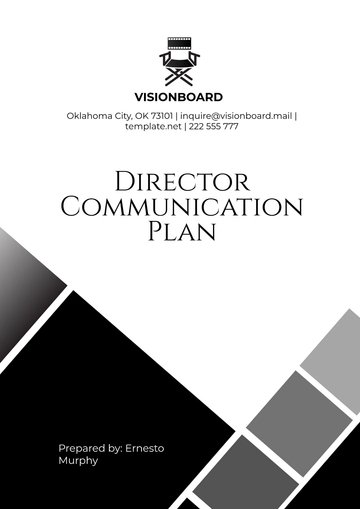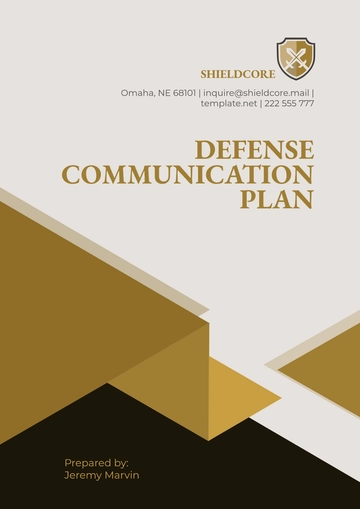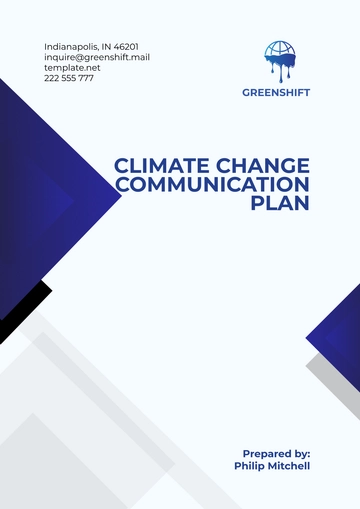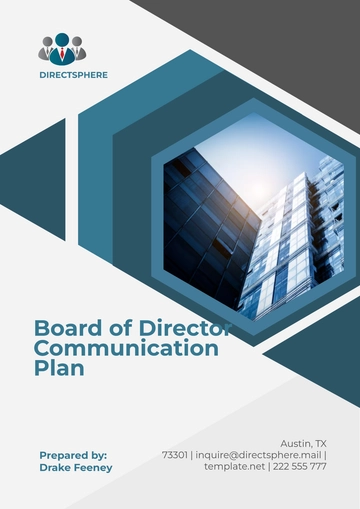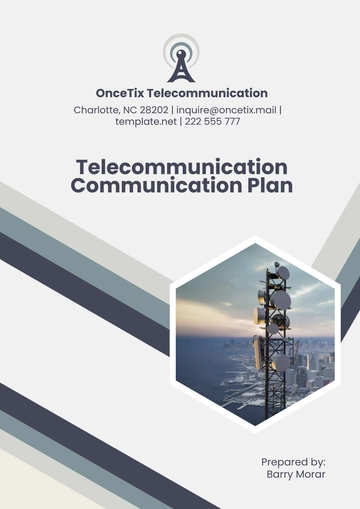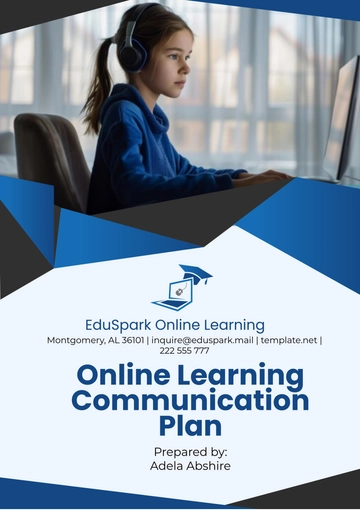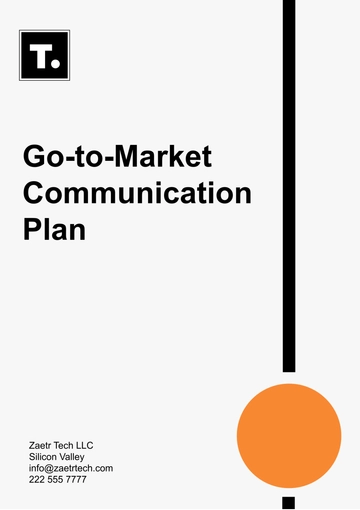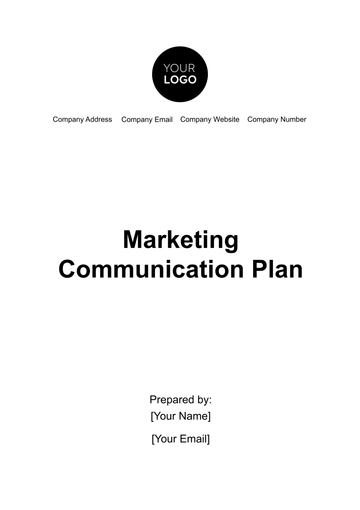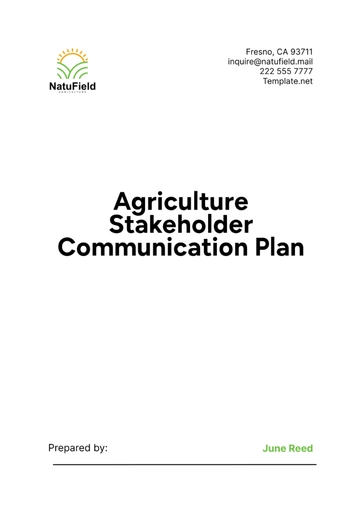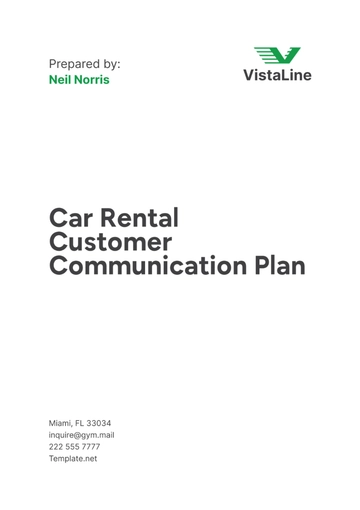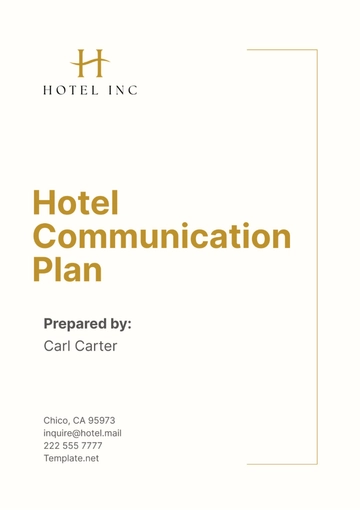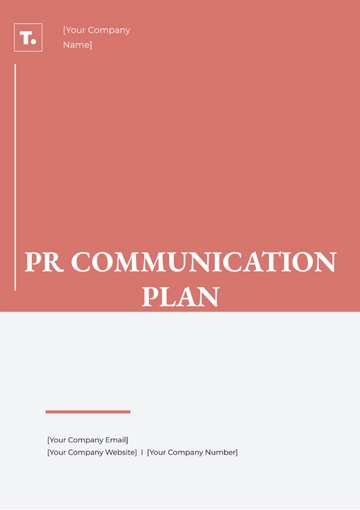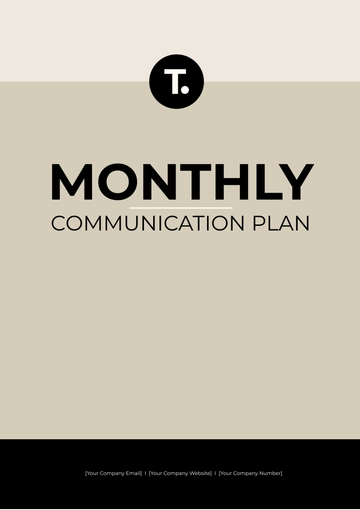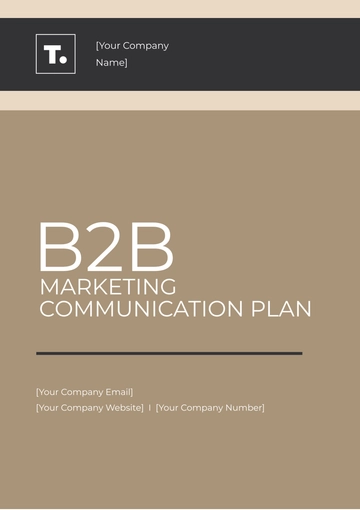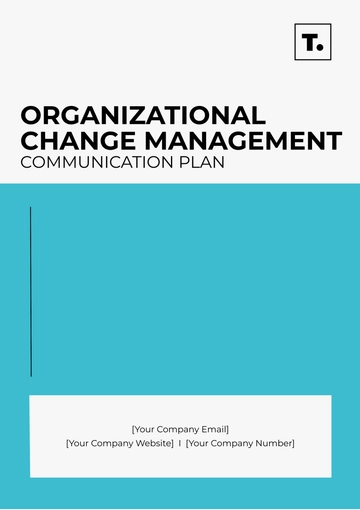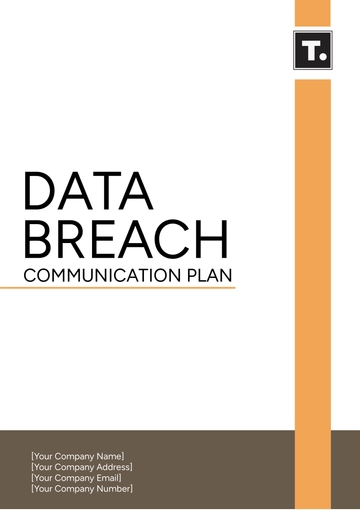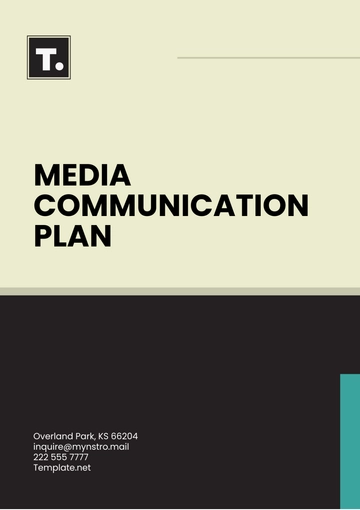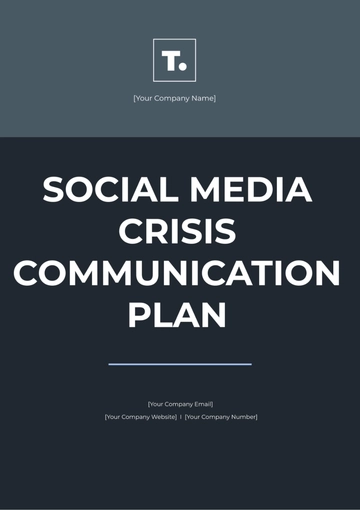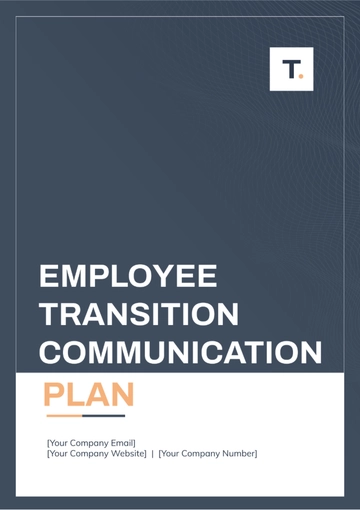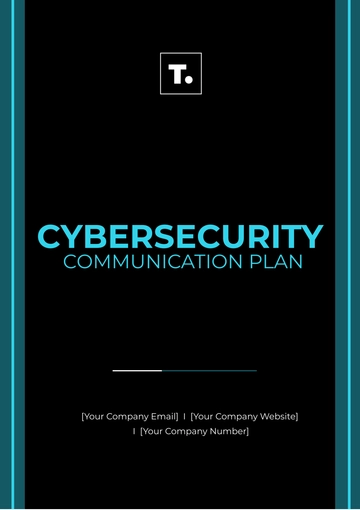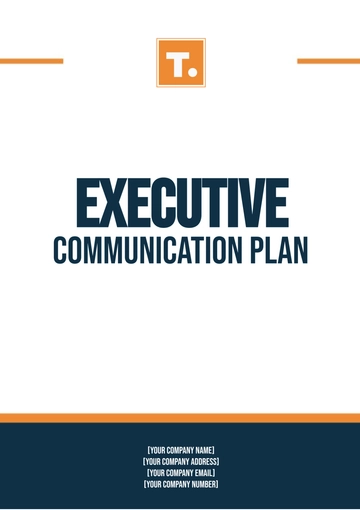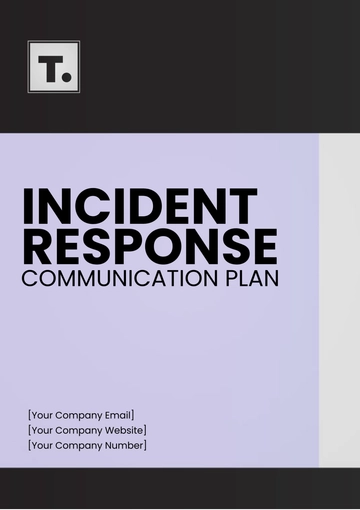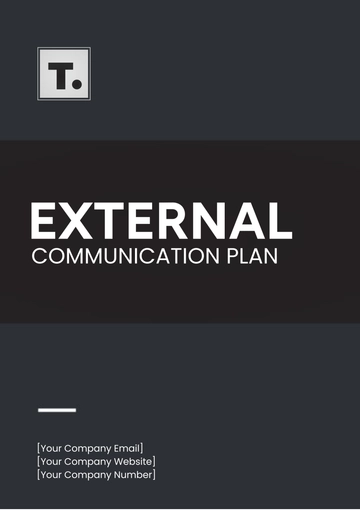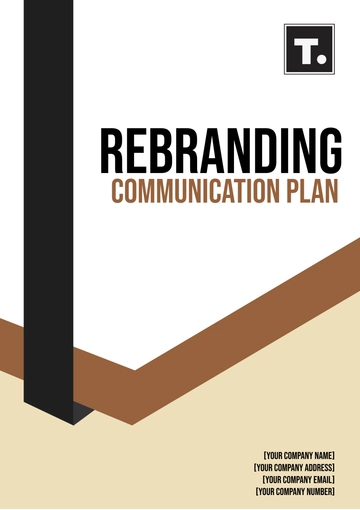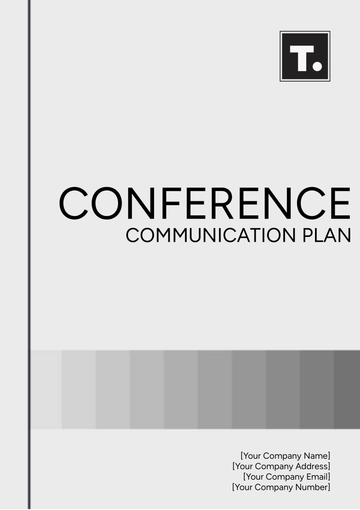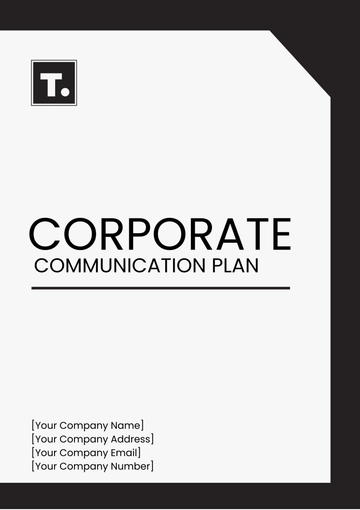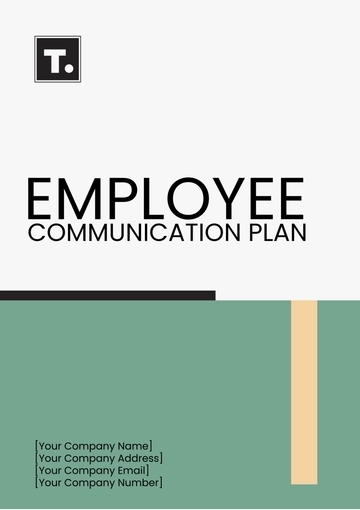Free Travel Agency Communication Plan
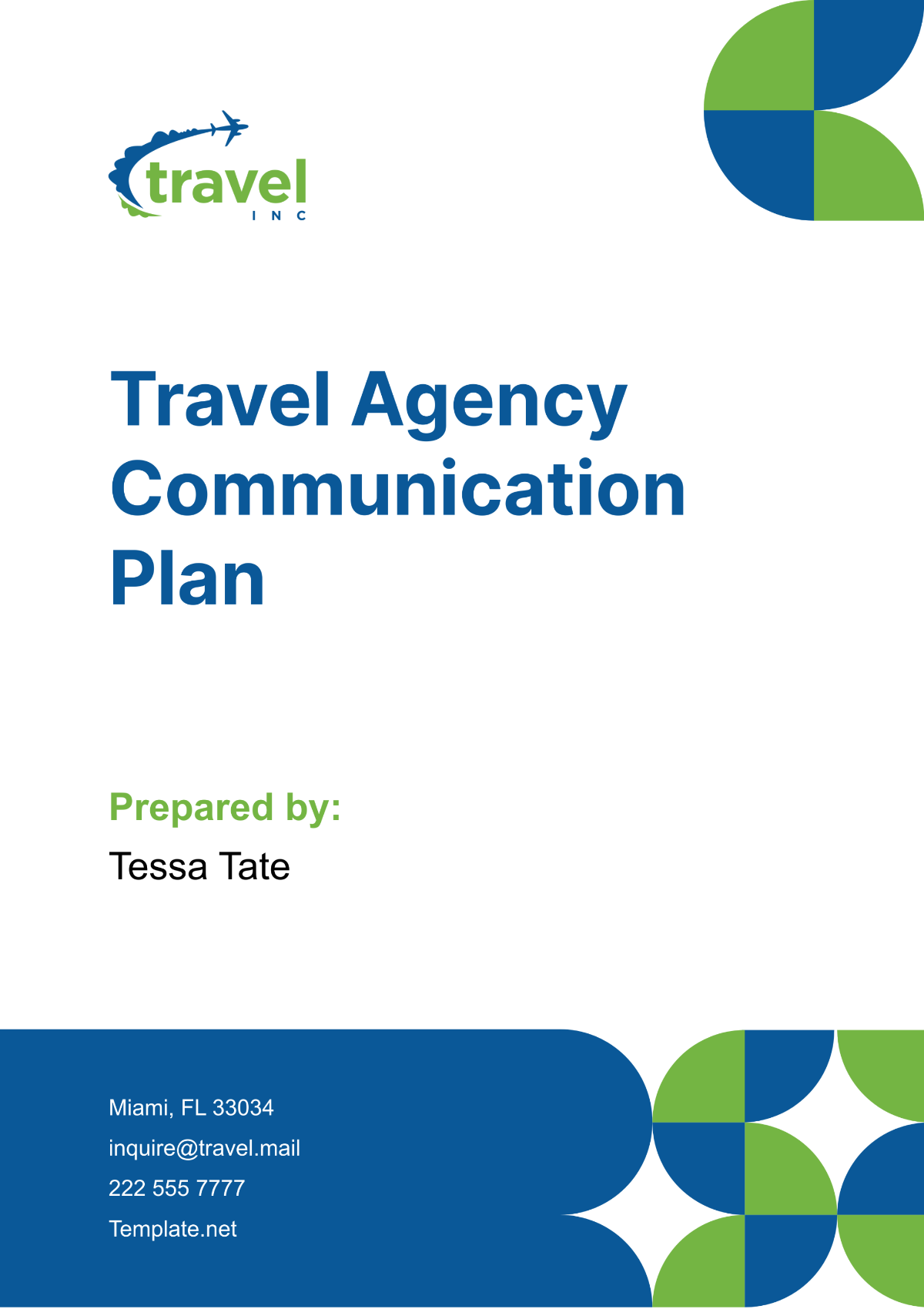
I. Executive Summary
[Your Company Name]'s Communication Plan strategically encompasses internal and external communication imperatives. It meticulously crafts a framework for consistent messaging, fortifying brand presence, nurturing stakeholder connections, and fortifying crisis preparedness. At its core, this plan aspires to instill transparency, cultivate deeper customer engagement, and propel business expansion by harmonizing all communication endeavors with our agency's fundamental objectives and ethos.
In today's dynamic travel landscape, maintaining a cohesive communication strategy is paramount. Internally, this plan fosters synergy among team members, ensuring everyone is aligned with our mission and objectives. Externally, it amplifies our brand voice across diverse channels, heightening visibility and resonance with our target audience. By fostering robust stakeholder relationships, we not only enhance loyalty but also lay a sturdy foundation for sustainable growth and resilience.
Furthermore, in anticipation of unforeseen challenges, our plan integrates crisis communication protocols. We prioritize preparedness, enabling swift, effective responses to any exigency, safeguarding our reputation and maintaining trust among our clientele and partners. By being proactive and transparent during times of crisis, we solidify our position as a reliable, trustworthy travel partner, further reinforcing brand credibility.
In essence, [Your Company Name]'s Communication Plan serves as a guiding compass, steering us towards sustained success in an ever-evolving industry. By upholding transparency, fostering engagement, and aligning with our overarching goals, we position ourselves as leaders committed to delivering exceptional experiences while navigating the complexities of the travel landscape with resilience and integrity.
II. Internal Communication Strategy
In this crucial section, we delve into the strategic framework designed to enhance organizational transparency and foster a well-informed, unified workforce. By implementing a robust internal communication strategy, the company ensures that all employees are aligned with its vision and updates, thereby optimizing operational efficiency and team synergy. Our approach includes a variety of communication channels and training initiatives tailored to support continuous employee engagement and information accuracy.
Tactic | Description | Frequency/Availability | Responsible Department |
|---|---|---|---|
Monthly Newsletters | Curated content including company news, updates, and employee spotlights to keep the workforce informed and engaged. | Monthly | Communications |
Internal Communications Portal | A central hub for all internal announcements, resources, and forums, accessible to all employees to foster a sense of community and shared knowledge. | Always Available | IT & Communications |
Regular Town Hall Meetings | Live sessions with executive leadership to discuss company strategies, developments, and employee concerns, promoting a transparent culture. | Quarterly and as needed | Human Resources |
Communication Tools Training | Training sessions focused on effective use of internal communication tools and protocols to ensure clear and efficient information exchange. | Annually and upon hire | Human Resources & IT |
Feedback Mechanisms | Structured systems for employees to provide feedback on internal communications and suggest improvements. | Continuous with quarterly reviews | Human Resources |
This table outlines our key tactics and frameworks, establishing a comprehensive roadmap for achieving an informed and cohesive workforce. Each element is strategically designed to not only disseminate information but also to encourage a culture of open dialogue and continuous improvement.
III. External Communication Strategy
In this pivotal section, we explore the strategic deployment of our multi-channel external communication strategy aimed at bolstering stakeholder engagement and enhancing our brand's visibility. By effectively leveraging various communication platforms, we aim to deliver tailored, impactful content that resonates with our customers, partners, and the public, ultimately strengthening our relationships and aligning with our long-term organizational goals.
Channel | Description | Target Audience | Responsible Department |
|---|---|---|---|
Website Updates | Regular updates on our website to provide fresh, relevant content that keeps our audience informed about products, services, and company news. | General Public & Customers | Marketing & IT |
Social Media | Dynamic and engaging posts, live interactions, and campaigns across platforms like Facebook, Twitter, and Instagram to engage with the community. | General Public & Younger Demographics | Marketing |
Email Marketing | Targeted email campaigns that deliver personalized offers, news, and content directly to subscribers' inboxes. | Customers & Subscribers | Marketing |
Public Relations | Strategic communications with the media and public to maintain and enhance the organization's image and to handle crisis communications. | Media & General Public | Public Relations |
This table delineates our sophisticated external communication channels, each designed to meet specific audience needs and organizational objectives. By executing this strategy, we ensure that our messaging is consistent, our brand presence is robust, and our stakeholder relationships are deeply nurtured.
IV. Brand Messaging Guidelines
In this essential section, we outline the comprehensive brand messaging guidelines crafted to ensure uniformity and coherence across all communications. By clearly defining our agency’s values, tone of voice, and key messages, these guidelines serve as a cornerstone for all internal and external interactions. They are vital for maintaining a consistent brand identity that resonates clearly and effectively with all stakeholders across diverse platforms.
Element | Description | Implementation Method | Responsible Department |
|---|---|---|---|
Agency Values | Core principles that reflect the ethos and commitments of our agency, guiding all business practices and communications. | Documented guidelines, staff training | Human Resources |
Tone of Voice | The specific style and emotional tone through which the brand communicates, tailored to resonate with our target audience. | Style guides, editorial standards | Marketing & Communications |
Key Messages | Fundamental ideas and messages that are consistently conveyed in all communications to reinforce the brand's mission and strategic goals. | Messaging frameworks, regular updates | Marketing & Communications |
Dissemination to Staff | Methods to ensure all employees understand and can apply the messaging guidelines in their daily interactions and communications. | Workshops, Intranet resources | Human Resources & Internal Communications |
Partner Communication | Ensure that external partners and collaborators are aligned with our messaging guidelines to maintain brand coherence externally. | Partner briefings, co-branded materials | Marketing & Partnerships |
This table provides a structured overview of our brand messaging guidelines, emphasizing the strategic deployment of consistent messaging across all levels of interaction. By adhering to these guidelines, we fortify our brand's identity and ensure that every communication reflects our values and strategic objectives effectively.
V. Stakeholder Engagement Plan
In this vital section, we detail our comprehensive stakeholder engagement plan, designed to nurture and strengthen relationships with all key stakeholders through consistent, targeted communication strategies. By employing a variety of engagement methods, we aim to gather valuable feedback, enhance loyalty, and maintain a dynamic interaction with our partners and customers, reinforcing trust and collaboration.
Stakeholder | Engagement Method | Purpose | Responsible Department |
|---|---|---|---|
Partners | Regular updates via newsletters, exclusive invitation-only events for feedback, and collaborative promotions. | To keep partners informed and involved, gather feedback, and strengthen collaborative efforts. | Partnerships |
Customers | Feedback surveys to understand customer needs and preferences, loyalty programs to reward ongoing engagement, interactive social media campaigns. | To enhance customer relationships, foster loyalty, and gather actionable insights. | Marketing & Customer Service |
This table encapsulates our strategic approach to stakeholder engagement, outlining specific methods and their purposes for different stakeholder groups. Through these initiatives, we ensure a robust connection with our partners and customers, facilitating an environment of trust and mutual benefit that supports our long-term business objectives.
VI. Content Creation and Management
In this section, we focus on the structured approach to content creation and management, crucial for delivering relevant and consistent messaging that aligns with our agency's strategic business objectives. By maintaining a comprehensive content calendar, we ensure that all communications are timely, coordinated, and maximally impactful, aligning with key business periods and market trends.
Component | Description | Implementation Strategy | Responsible Department |
|---|---|---|---|
Content Calendar | A detailed schedule of all planned external communications, including content type, release dates, and channels. | Regular updates and alignment with marketing and promotional plans. | Marketing & Communications |
Alignment with Business Periods | Ensuring content release coincides with key business periods, promotional campaigns, and significant industry trends. | Strategic planning sessions to forecast and align content with business cycles. | Strategic Planning |
Content Creation | Development of content that supports business objectives, reflects brand values, and engages target audiences. | Team collaboration, use of market research, and creative input. | Content Development Team |
Content Distribution | Coordinated dissemination of content across appropriate channels to maximize reach and impact, including social media, blogs, and newsletters. | Utilize analytics to choose best channels and times for release. | Digital Marketing |
This table provides a clear framework for our content creation and management processes, detailing each component's role in supporting and enhancing our communication strategies. Through careful planning and execution, we ensure that our content effectively reaches and resonates with our audience, supporting our overall marketing and business strategies.
VII. Communication Channels Overview
In this detailed section, we explore the diverse array of communication channels employed by our agency, each designed to meet specific objectives and reach targeted audiences efficiently. This overview ensures that every channel is optimally utilized to disseminate content, engage with various stakeholders, and support the agency's overarching communication strategy.
Channel | Purpose | Audience | Frequency |
|---|---|---|---|
Promotions and updates | Customers | Weekly | |
Social Media | Engagement and interaction | Public | Daily |
Internal Portal | Essential for internal communication | Staff | As needed |
Website | Dissemination of information | Global users | Updated regularly |
Press Releases | Media relations and public announcements | Media | Monthly |
This table methodically categorizes our communication channels, detailing their purpose, target audience, and frequency of use. By maintaining a strategic approach to each channel, we ensure effective communication flows, both internally and externally, enhancing our ability to reach and impact our audience consistently and meaningfully.
VIII. Crisis Communication Protocol
In this critical section, we outline the agency's proactive crisis communication protocol, designed to manage communications effectively during unforeseen events. By implementing a well-defined response strategy, including immediate internal notifications and structured external messaging, our agency aims to mitigate risks and maintain trust during crises. Regular training ensures that our team is always prepared to respond swiftly and appropriately.
Component | Description | Implementation Strategy | Responsible Department |
|---|---|---|---|
Internal Notifications | Immediate alerts to inform staff of the crisis and activate the response protocol. | Automated systems and manual protocols in place. | Internal Communications |
Designated Spokespersons | Identified individuals authorized to communicate on behalf of the agency during a crisis. | Pre-selected based on expertise and training in crisis communication. | Public Relations |
External Messaging Plan | A structured approach for communicating with the public, stakeholders, and media during a crisis. | Template messages and live updates as the situation evolves. | Public Relations & Marketing |
Crisis Communication Training | Bi-annual training sessions for all staff to prepare for potential crisis situations. | Scenario-based drills and educational workshops. | Human Resources & Public Relations |
This table presents a robust framework for our crisis communication efforts, emphasizing preparedness and strategic response. Through this protocol, we ensure that all communication during a crisis is timely, controlled, and effective, minimizing negative impacts and preserving our agency's credibility and trust with all stakeholders.
IX. Monitoring and Evaluation
In this essential section, we detail the structured approach to monitoring and evaluation of our communication plan, ensuring that all strategies are effectively contributing to our agency’s goals. By employing a variety of metrics, we assess the reach and impact of our communications, enabling us to make informed adjustments and enhance our engagement efforts continually.
Component | Description | Metrics Used | Responsible Department |
|---|---|---|---|
Engagement Rates | Measurement of how actively audiences interact with our content across different platforms. | Likes, shares, comments, and participation rates. | Marketing & Communications |
Feedback Quality | Analysis of the depth and usefulness of feedback received from stakeholders. | Survey responses, customer reviews, and formal feedback. | Customer Service & Partnerships |
Communication Reach | The extent to which our communication efforts reach the intended audiences. | Audience size, open rates, and view counts. | Digital Marketing |
Alignment with Strategic Objectives | Assessment of how well communications support the agency’s strategic goals. | Alignment of campaign results with business objectives. | Strategic Planning |
This table outlines our comprehensive monitoring and evaluation strategies, highlighting the key metrics and the departments responsible for each. By continuously tracking these indicators, we adapt and refine our communications to maximize effectiveness and ensure that our messaging always supports our strategic objectives and engages our audience effectively.
X. Training and Development
In this section, we emphasize the importance of continuous training and development to keep our staff adept at using the latest communication tools and best practices. This commitment ensures that our team’s capabilities evolve in tandem with changing technologies and market trends. Special focus is placed on enhancing customer service communication and the secure, effective handling of sensitive information.
Aspect | Description | Focus Areas | Responsible Department |
|---|---|---|---|
Communication Tools Training | Training on the latest tools and technologies used in communications to enhance efficiency and reach. | Social media platforms, CRM systems, analytics tools. | IT & Communications |
Best Practices Education | Regular updates and workshops on the latest trends and effective communication strategies. | Content creation, data privacy, responsive communication. | Human Resources & Communications |
Customer Service Training | Focused training to improve interactions with customers, ensuring satisfaction and loyalty. | Handling inquiries, conflict resolution, customer engagement. | Customer Service |
Secure Information Handling | Training on the secure management of sensitive information to prevent breaches and ensure confidentiality. | Data security protocols, GDPR compliance, secure communication practices. | IT & Security |
This table provides a structured overview of our training and development strategies, outlining key focus areas and the departments responsible for implementing these initiatives. Through ongoing education and practice, we empower our staff to communicate effectively and securely, ensuring that our team not only keeps pace with industry changes but also leads in innovation and best practices.
XI. Budget and Resource Allocation
In this section, we provide a detailed breakdown of the budget and resource allocation that supports the varied initiatives outlined in our communication plan. This precision in financial planning ensures the strategic and effective implementation of our communication efforts across all operations, equipping our agency with the necessary tools and capabilities.
Initiative | Description | Allocated Resources | Estimated Costs | Responsible Department |
|---|---|---|---|---|
Training Programs | Investment in comprehensive training sessions to enhance staff proficiency in communications. | Funds for trainers, materials, and workshop venues. | $50,000 annually | Human Resources |
Content Creation | Resources allocated for developing high-quality, engaging content across various platforms. | Budget for content team, freelancers, and equipment. | $75,000 annually | Marketing & Communications |
Technology Upgrades | Funding for the latest tools and software that facilitate effective communication. | Investment in new software, hardware, and licenses. | $30,000 annually | IT & Communications |
Monitoring Tools | Tools to track and evaluate the effectiveness of communication strategies. | Budget for analytics tools and subscription services. | $25,000 annually | Digital Marketing |
This table offers a clear and comprehensive outline of our financial commitment to each strategic area of our communication plan. By allocating specific budget amounts, we ensure that each initiative is effectively funded to maximize efficiency and impact. This targeted investment supports our overall goal of enhancing communication capabilities and achieving business objectives.
XII. Conclusion
It is essential to reflect on the strategic alignment and integrated approach that underpins our entire communication framework. This plan is meticulously designed to ensure that every aspect—from internal communications and stakeholder engagement to crisis management and content dissemination—is orchestrated to enhance our agency's operational efficiency and market presence.
Our commitment to utilizing a comprehensive suite of communication tools and techniques is evident in the detailed planning and budget allocations presented. By investing in advanced training, cutting-edge technology, and robust monitoring systems, we empower our staff to deliver exceptional service and engage effectively with all stakeholders. These initiatives are not only about maintaining relevance in a competitive market but also about setting new standards for excellence in the travel industry.
The successful implementation of this plan requires ongoing evaluation and adaptability to respond to new challenges and opportunities. As the market evolves and new trends emerge, our communication strategies will also adapt, ensuring that we remain at the forefront of the industry. This dynamic approach guarantees that our agency continues to build on its legacy of trust and innovation, driving forward with clarity and confidence toward our strategic goals.
In essence, this communication plan is more than just a blueprint for exchanging information; it is a fundamental component of our strategic vision, designed to propel our agency towards sustained growth and success in the ever-changing landscape of global travel.
- 100% Customizable, free editor
- Access 1 Million+ Templates, photo’s & graphics
- Download or share as a template
- Click and replace photos, graphics, text, backgrounds
- Resize, crop, AI write & more
- Access advanced editor
Streamline your travel agency's outreach with Template.net's Travel Agency Communication Plan Template. This editable and customizable template ensures you effectively manage and execute your communication strategies. Optimized for convenience, it's easily editable in our Ai Editor Tool. Enhance your marketing efforts, ensure consistent messaging, and elevate your agency's presence in the market. Start crafting your expert communications today!
